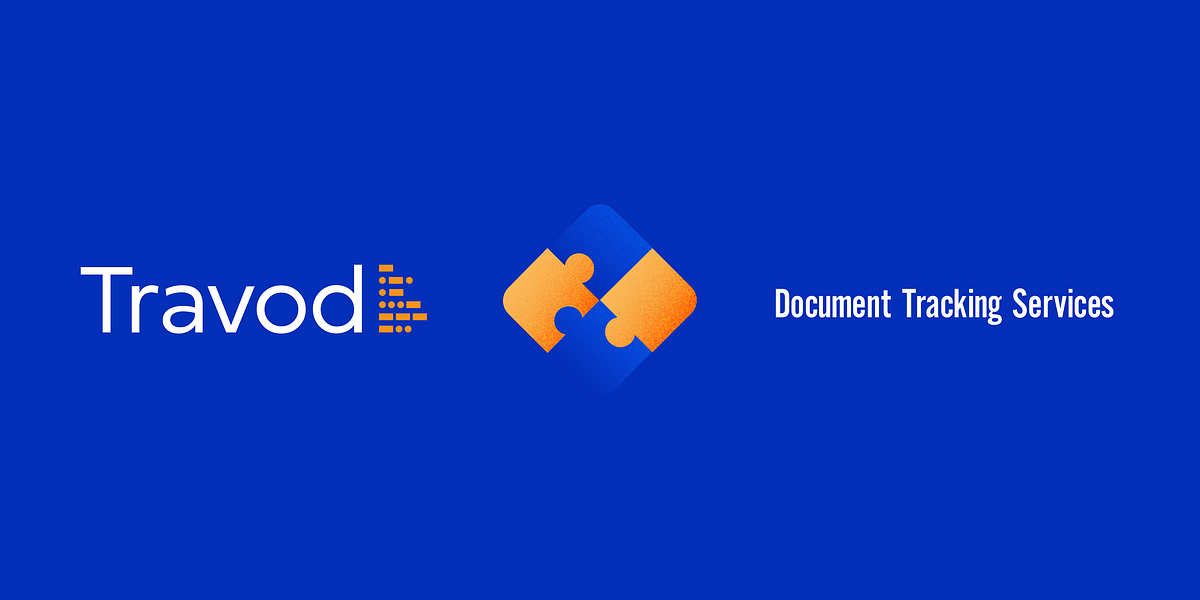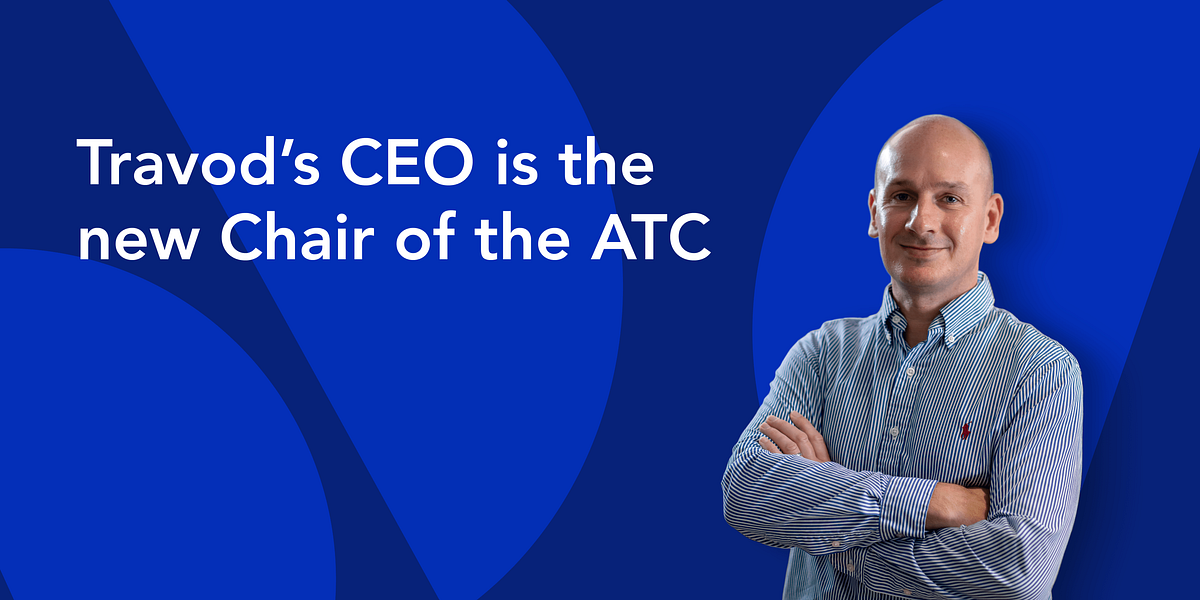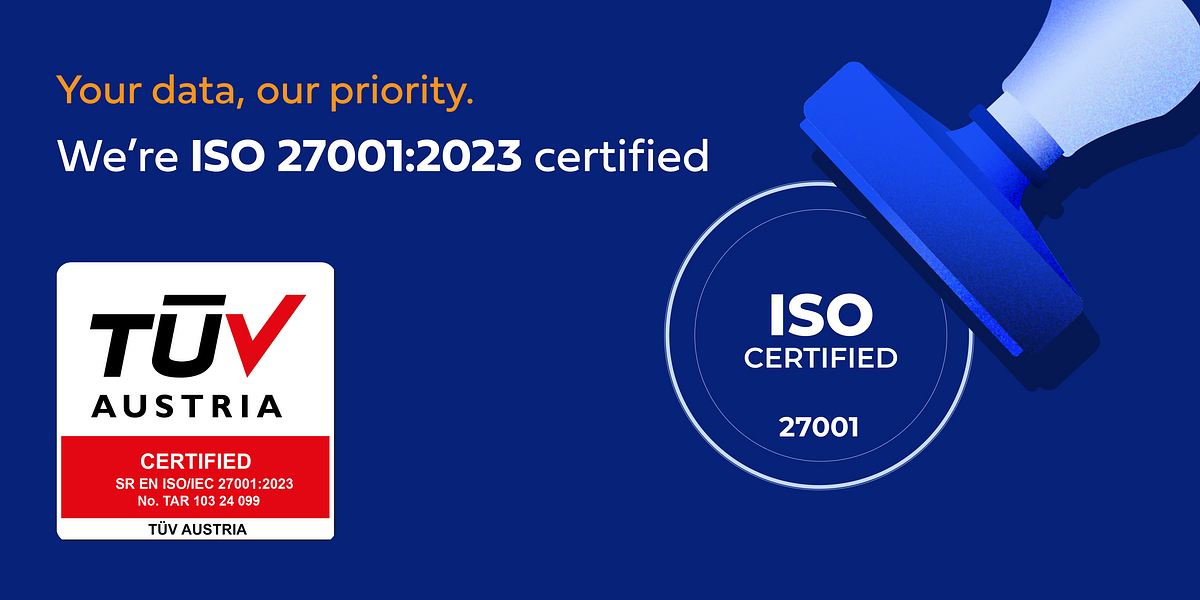
The rise of global video: A guide to professional video localization services
The rules of video marketing have shifted completely. That single English-language video you created for your last campaign? It won't work anymore. Today's audiences span continents, speak dozens of languages, and expect video content that feels crafted specifically for them.
The data tells a compelling story: the global video localization services market is racing toward $6.5 billion by 2033, up from $3.5 billion today. But this isn't just about market size—it's about survival. When 91% of businesses are using video as their primary marketing tool and 3.3 billion people are consuming video content daily, getting localization wrong isn't just a missed opportunity. It's a brand killer.
The truth is: professional video translation services aren't luxury add-ons anymore. They're the difference between connecting with global audiences and talking to an empty room.
Travod meets this challenge head-on by leveraging a robust around-the-clock translation service built on the Follow-the-Sun model.
This approach means your marketing messages are translated and delivered to audiences around the world without delay, maintaining both speed and quality at every stage.
Let's explore this model in more depth.
The global video explosion
Every single minute, 360 hours of fresh content hits YouTube. That's 2.6 million YouTube videos daily, competing for attention in an increasingly crowded space. What's striking: 75% of those views happen on mobile devices, where attention spans are measured in seconds, not minutes.
The streaming wars have only accelerated this trend. Netflix didn't subtitle 7 million runtime minutes and dub 5 million more in 2021 for fun—they did it because localized video content performs.
Social media videos have become the battleground for global brands. A YouTube channel that works in English might flop in Spanish-speaking markets without proper video translation. Corporate videos that resonate in New York can confuse audiences in Tokyo if cultural nuances aren't addressed.
The creator economy has professionalized alongside this growth. Today, 54.9% of content creators work full-time, with 74.7% focusing on video content. This professionalization means higher production values, more sophisticated distribution strategies, and greater investment in video localization services to maximize global reach.
Marketing videos and instructional videos now require multiple languages to reach target audiences effectively. The shift from "one-size-fits-all" to culturally nuanced content strategies reflects audience expectations. Global viewers no longer accept generic content adapted for their market as an afterthought.
In summary:
- 2.6 million YouTube videos uploaded daily (360 hours per minute)
- 75% of video plays happen on mobile devices
- 4.9 billion streaming users expected by 2029
- Content creators are professionalizing: 55% work full-time, 75% create video content
- One-size-fits-all content no longer works in diverse global audiences
When to choose subtitling vs. voice-over
Cultural psychology gets interesting here. Americans will happily read translated subtitles for foreign content, but show a German audience subtitled content and 76% will click away—they want voice over. It's not about laziness; it's about deeply ingrained viewing preferences that can make or break your campaign.
The market reflects these preferences. Video subtitling services are exploding at 11.4% annual growth, while voice over maintains steady 7.4% growth. Put simply: there's money in both, but you need to pick the right tool for the right target audience.
Video subtitling offers clear advantages for speed and cost-effectiveness. With 68% of consumers preferring short videos (15-60 seconds), translated subtitles can be produced quickly without the complex coordination required for voice talent. They're ideal for trending content, news-jacking, and campaigns where time-to-market trumps production polish.
Voice over excels at emotional connection and brand building. When your message depends on tone, personality, or complex emotional nuance, dubbed content often delivers superior results. Professional voice actors carry cultural markers that subtitles cannot replicate—accent, intonation, and speaking rhythm all contribute to authentic native language experiences.
Platform compatibility influences the decision too. Some platforms favor subtitled content due to autoplay settings and mobile viewing patterns, while others support richer audio and video experiences that benefit from professional voiceover recording.
Video translation cost considerations remain practical. Video subtitling typically costs $5-15 per minute, while voice over ranges from $50-150+ per minute. However, the cost-per-impression often favors higher-investment approaches when they significantly improve engagement and conversion rates.
In summary:
- Cultural preferences vary: Americans prefer subtitles, Germans prefer dubbing
- Video subtitling market growing 11.4% annually ($3.2B to $7.4B by 2030)
- Voice over market growing 7.4% annually ($4.2B to $8.6B by 2034)
- Short videos (15-60 seconds) preferred by 68% of consumers
- Choose subtitles for speed/cost, voice over for emotional connection
Technical execution essentials
Quality standards in video localization have evolved rapidly, driven by both technological advancement and rising audience expectations. AI translation now achieves 90-98% accuracy for clear audio files in common languages, but this baseline performance masks significant variation in real-world conditions.
Video subtitling demands attention to timing, character limits, and readability. The industry standard allows roughly 160-180 characters per subtitle, displayed for 1-7 seconds depending on reading speed and content complexity. Poor timing destroys immersion—translated subtitles that appear too early spoil dialogue, while late subtitles create confusion.
Character limits vary by platform and language. Languages with longer average word lengths require different approaches than more concise languages. German compound words, for instance, can challenge standard subtitle formatting, while languages with different reading directions need specialized technical handling for on screen text.
Voice over production requires careful voice talent selection and audio transcription quality management. The voice must match not just the target language but the cultural context, age, and personality of the original video speaker. A corporate executive's voice over in Japanese carries different cultural weight than the same content delivered in American English.
Technical quality standards have become non-negotiable. Audio files must be broadcast-quality, properly mixed, and synchronized precisely with visual elements. Poor audio quality immediately signals amateur production values, undermining brand credibility.
File formats and platform-specific requirements add complexity. YouTube's automated transcription interacts differently with professional video subtitles than LinkedIn's video player. TikTok's mobile-first format demands different subtitle styling than traditional streaming platforms.
At Travod, we've seen how proper quality control throughout the entire translation process makes the difference between amateur and professional results. Our extensive experience with media files across platforms ensures your video file meets technical standards while maintaining cultural authenticity.
In summary:
- AI translation achieves 90-98% accuracy for clear audio
- Costs range from $5-15/min for video subtitling, $50-150+/min for voice over
- Netflix processes 7M subtitle minutes and 5M dubbing minutes annually
- Technical standards vary by platform—one size doesn't fit all
- Quality control is non-negotiable for brand protection
Selecting partners with cultural intelligence
Cultural sensitivity in video localization extends far beyond linguistic accuracy. It requires understanding how humor translates, which visual references resonate, and how storytelling conventions differ across cultures. The stakes are high: 76% of Gen Z and millennials in the UK and US consume foreign language content, compared to 56% of older generations, suggesting cultural adaptation will only become more critical.
All major OTT platforms—Netflix, Amazon Prime, Disney+—use a combination of AI translation and human expertise for good reason. Technology handles the heavy lifting, but professional translators catch cultural nuances that algorithms miss. A joke that works in New York might fall flat in Mumbai, not because of language translation quality but because of cultural context.
The business impact is measurable. Videos with translated subtitles see 80% higher viewership and 70% better engagement rates than those without. However, these benefits only materialize when the localization feels authentic to international audiences.
When evaluating potential partners, look for evidence of cultural understanding beyond language skills. Do they understand local social media trends? Can they adapt visual elements that might not translate culturally? Do they have native speakers who understand regional dialects and cultural references?
Red flags include vendors who promise unrealistic turnaround times, lack native speakers for your target markets, or cannot provide examples of culturally adapted content. Success indicators include strong portfolios of work in your industry, testimonials from brands with similar cultural challenges, and clear processes for cultural review and adaptation.
Localization professionals with extensive experience understand that interactive content and engaging content require different approaches than static materials. They know how translation memory can maintain consistency across localization projects while allowing for cultural adaptation.
We understand that multimedia localization isn't just about converting words—it's about preserving the emotional impact of your original video while making it feel native to each target market. Our international network of professional translators and native speakers ensures your message resonates authentically across cultures.
In summary:
- Gen Z/Millennials (76%) consume more foreign content than older generations (56%)
- All major platforms use human expertise alongside AI translation
- Videos with translated subtitles see 80% higher viewership and 70% better engagement
- Cultural sensitivity goes beyond language—humor, references, and storytelling matter
- Look for partners who understand your brand, not just your words
Streamlining global content workflows
Efficient workflows become critical as content volume scales. The AI translation subtitle generator market, projected to reach $1.5 billion by 2025 with 18% annual growth, reflects the industry's push toward automation. However, the broader multimedia localization market's expansion from $5.2 billion in 2022 to a projected $12.4 billion by 2030 suggests that human expertise remains essential.
Managing approval processes across time zones requires systematic project management. When your content team is in Los Angeles, your video translator is in London, and your regional marketing team is in Singapore, coordination becomes complex. Clear approval workflows with defined responsibilities and realistic timelines prevent bottlenecks that can derail campaign schedules.
Technology integration can streamline these processes significantly. Platforms that allow real-time collaboration, automated transcription, and integrated feedback loops reduce the administrative overhead of managing multilingual videos and target markets simultaneously.
Project management best practices include establishing clear communication protocols, setting realistic expectations for turnaround times, and building buffer time for cultural adaptation and regional feedback. The most successful campaigns plan for video localization from the beginning rather than treating it as a post-production afterthought.
Modern localization services offer cost effective solutions that can handle everything from closed captions to full voiceover recording with just a few clicks. Technical support ensures your video file maintains quality across different languages and file formats.
Scaling operations requires systems thinking. What works for localizing one video per month breaks down when you're producing daily content for multiple markets. Successful scaling often involves establishing preferred vendor relationships, standardizing quality metrics, and investing in language services that can handle increased volume without compromising quality.
In summary:
- AI translation tools market growing 18% annually, reaching $1.5B by 2025
- Multimedia localization market expanding 11.7% annually ($5.2B to $12.4B by 2030)
- Efficient workflows require clear approval processes across time zones
- Technology integration is key to scaling without quality compromise
- Plan for growth—your localization needs will expand with success
Measuring localization success
Traditional engagement metrics tell only part of the story. While 80% of viewers are more likely to watch videos with translated subtitles and 70% of videos with subtitles achieve higher engagement rates, these numbers don't capture cultural resonance—the deeper connection that drives brand loyalty and conversion.
Cultural resonance indicators include audience feedback quality, social media sentiment in local languages, and regional performance variations that suggest cultural fit. A marketing video that performs well in Germany but poorly in Austria might have cultural adaptation issues despite sharing the same language.
ROI measurement requires market-specific analysis. North America leads the dubbing and voice over market with 43.5% market share and $1.8 billion revenue in 2024, but this dominance reflects market maturity rather than universal best practices. Emerging markets might show different patterns of video localization effectiveness.
Beyond basic metrics, track completion rates, sharing behavior, and conversion actions by market. These indicators reveal whether localized video content is truly connecting with international audiences or merely being consumed passively.
Performance data should inform future video localization services strategies. If subtitled content consistently outperforms dubbed content in specific markets, adjust your approach accordingly. If certain types of cultural adaptation generate higher engagement, incorporate those insights into future campaigns.
Captioning services and transcription services provide valuable data beyond just accessibility compliance. Closed captions usage patterns can reveal audience preferences and engagement levels that inform future video marketing strategies.
The most valuable measurement combines quantitative performance data with qualitative cultural feedback. Regional teams can provide insights that metrics alone cannot capture, helping refine video localization approaches for maximum impact.
In summary:
- 80% of viewers more likely to watch videos with translated subtitles
- 70% higher engagement rates for videos with subtitles
- North America leads with 43.5% market share ($1.8B revenue in 2024)
- Track cultural resonance, not just engagement metrics
- Use data to optimize future video localization services investments and strategies
Future trends and getting started
Video localization continues evolving rapidly. AI translation will enhance human expertise rather than replace it, particularly for cultural adaptation that requires nuanced understanding of local contexts. Video consumption doubling annually on mobile creates urgent pressure for brands to establish effective video localization services processes now.
Emerging platforms bring new requirements and opportunities. Each platform develops its own technical standards, audience expectations, and cultural norms that influence video translation approaches. Early adopters who master these platform-specific requirements gain competitive advantages.
Professional video translation services are becoming more accessible through improved technology and streamlined workflows. What once required weeks of coordination can now be accomplished with just a few clicks through modern language services platforms.
For content creators ready to scale globally, start with key target markets and proven partners before expanding. Attempting to localize for every market simultaneously often results in mediocre results across all regions. Focus on markets where you have business objectives, cultural understanding, and the resources to execute effectively.
Invest in quality from the beginning. Fixing video localization mistakes costs significantly more than doing it right initially, both in direct costs and opportunity costs from damaged market perception. The brands that succeed in global markets treat video localization services as a strategic investment rather than a cost center.
Translation memory systems and automated transcription tools are making the entire translation process more efficient, but professional translators and native speakers remain essential for engaging content that truly connects with audiences.
The competitive advantage belongs to early movers who establish strong video localization capabilities while their competitors are still debating whether global expansion is worth the investment. With video consumption growing exponentially and audience expectations rising, the question isn't whether to invest in professional video translation services—it's how quickly you can implement systems that will drive your international success.
In summary:
- AI translation will enhance but not replace human expertise
- Video consumption doubling annually creates urgent video localization needs
- Start with key target markets and proven partners before scaling
- Invest in quality from the beginning—fixing mistakes costs more than doing it right
- Early movers gain competitive advantage in global markets
FAQ
Why is professional video localization essential for global brands?
Professional video localization is essential for global brands because 91% of businesses use video as a core marketing tool, and 3.3 billion people watch videos daily. Without localized content, brands risk poor engagement, cultural disconnects, and compliance issues. Effective localization ensures global reach, viewer connection, and marketing success.
Why is cultural sensitivity important in video translation?
Cultural sensitivity is important in video translation because humor, references, and storytelling differ by region. Without cultural adaptation, even well-translated videos can fail. Professional translators understand local nuances, increasing authenticity and viewer trust. Authentic content leads to higher engagement, stronger brand impact, and more effective global marketing campaigns.
What are the technical standards for high-quality video localization?
High-quality video localization requires synced audio, accurate subtitling, and platform-specific formatting. Subtitles must follow character limits and timing guidelines, while voice overs need culturally appropriate voice talent and clean audio. Poor execution undermines credibility. Travod ensures all localization meets broadcast standards and cultural expectations across formats.
How does video localization improve engagement?
Video localization improves engagement by tailoring content to local languages and cultural preferences. Translated subtitles increase viewership by 80% and boost engagement by 70%. Localized videos connect emotionally with audiences, enhance brand trust, and improve completion rates—especially on mobile platforms where attention spans are shorter.
What’s the difference between subtitling and voice over in video localization?
The main difference between subtitling and voice over in video localization is viewer experience. Subtitling is cost-effective and ideal for short-form content, while voice over creates emotional connection using tone and cultural nuance. Germans prefer dubbing; Americans prefer subtitles—choosing the right method impacts audience retention and brand resonance.
About Travod
Travod is a global provider of expert language services and agile technology solutions for businesses worldwide, and part of the Mondia Technologies Group. Providing culturally localised content, Travod offers a full range of translation services in 100+ languages. Our international team of 130 in-house employees and over 5,000 specialist linguists work together to provide a bespoke service for more than 6,000 organisations and brands. Travod is fully ISO 9001, ISO 17100, ISO 18587 and ISO 27001 certified, demonstrating its ongoing commitment to the highest standards of quality in the translation industry.
Subscribe for more
Stay up to date with the latest articles, news and translation insights


